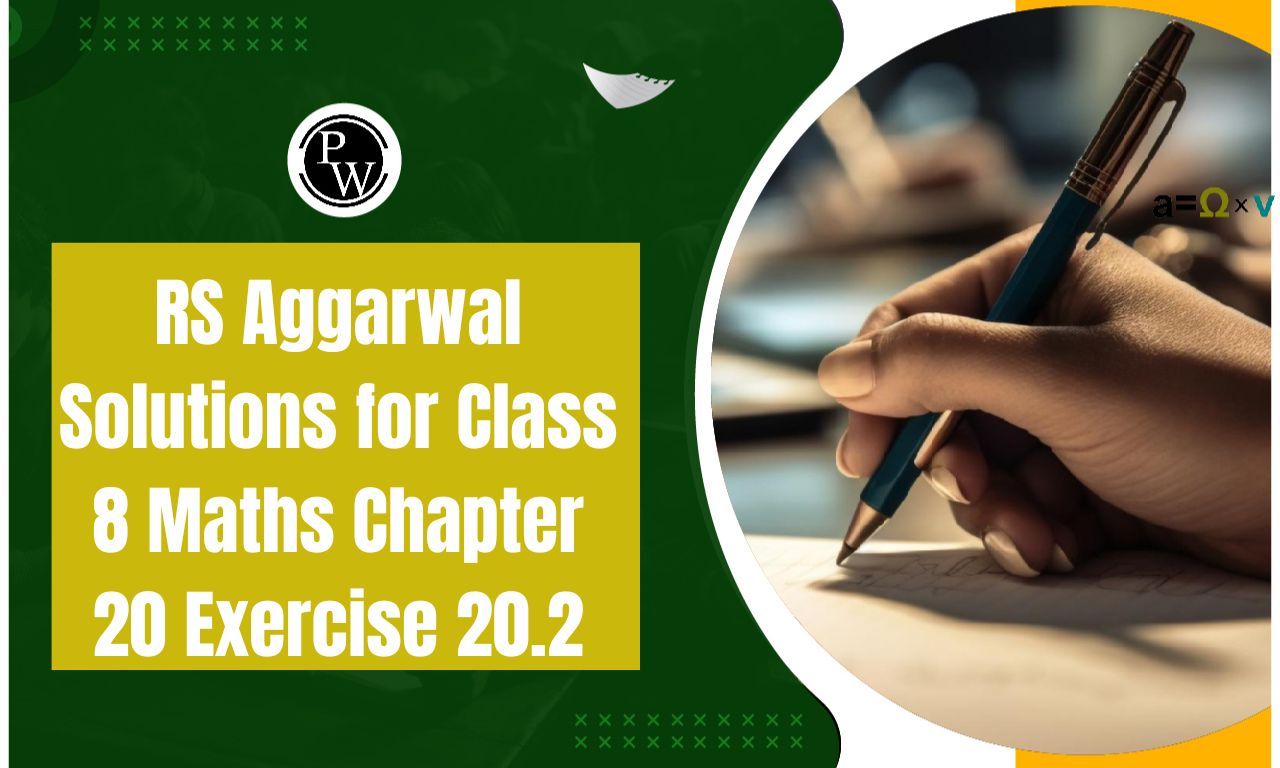
RS Aggarwal Solutions for Class 8 Maths Chapter 20 Exercise 20.2: The Physics Wallah academic team has produced a comprehensive answer for Chapter 20: Volume and Surface Area of Solids in the RS Aggarwal class 8 textbook. The RS Aggarwal class 8 solution for Chapter 20 Volume and Surface Area of Solids Exercise-20B is uploaded for reference only; do not copy the solutions.
Before going through the solution of Chapter 20 Volume and Surface Area of Solids Exercise-20B, one must have a clear understanding of chapter 20 Volume and Surface Area of Solids. Read the theory of chapter 20 Volume and Surface Area of Solids and then try to solve all numerical of exercise-20B. NCERT solutions were prepared by the Physics Wallah academic staff. Please use the NCERT maths solutions for class 8 to answer all of the questions in the exercise.RS Aggarwal Solutions for Class 8 Maths Chapter 20 Exercise 20.2 PDF
(1) Find the volume, curved surface area and total surface area of each of the cylinders whose dimensions are:
(i) Radius of the base = 7 cm and height = 50 cm

(ii) Radius of the base = 5.6 m and height = 1.25 m

(iii) Radius of the base = 14 dm and height = 15 m

(2) A milk tank is in the form of a cylinder whose radius is 1.5 m and height is 10.5 m. Find the quantity of milk in litres that can be stored in the tank.

(3) A wooden cylindrical pole is 7 m high and its base radius is 10 cm, Find its weight if the wood weighs 225 kg per cubic metre.

(4) Find the height of the cylinder whose volume is 1.54 m 3 and diameter of the base is 140 cm?

(5) The volume of a circular iron rod of length 1 m is 3850 cm 3 . Find its diameter.

(6) A closed cylindrical tank of diameter 14 m and height 5 m is made from a sheet of metal. How much sheet of metal will be required?

(7) The circumference of the base of a cylinder is 88 cm and its height is 60 cm. Find the volume of the cylinder and its curved surface area.
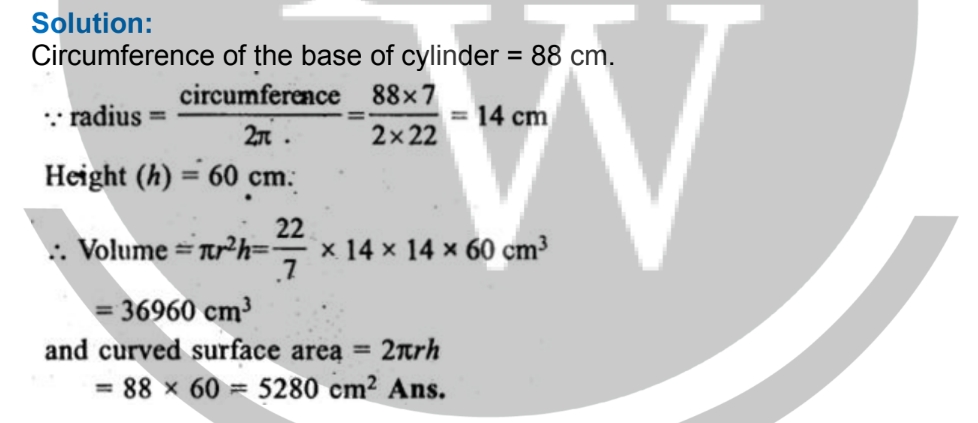
(8) The lateral surface area of a cylinder of length 14 m is 220 m 2 . Find the volume of the cylinder.
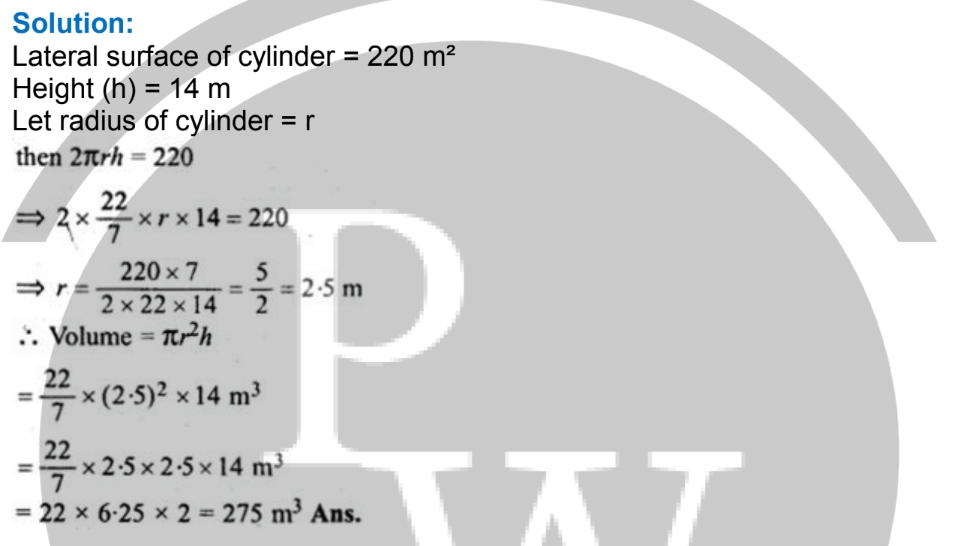
(9) The volume of a cylinder of height 8 cm is 1232 cm 3 . Find its curved surface area and the total surface area.
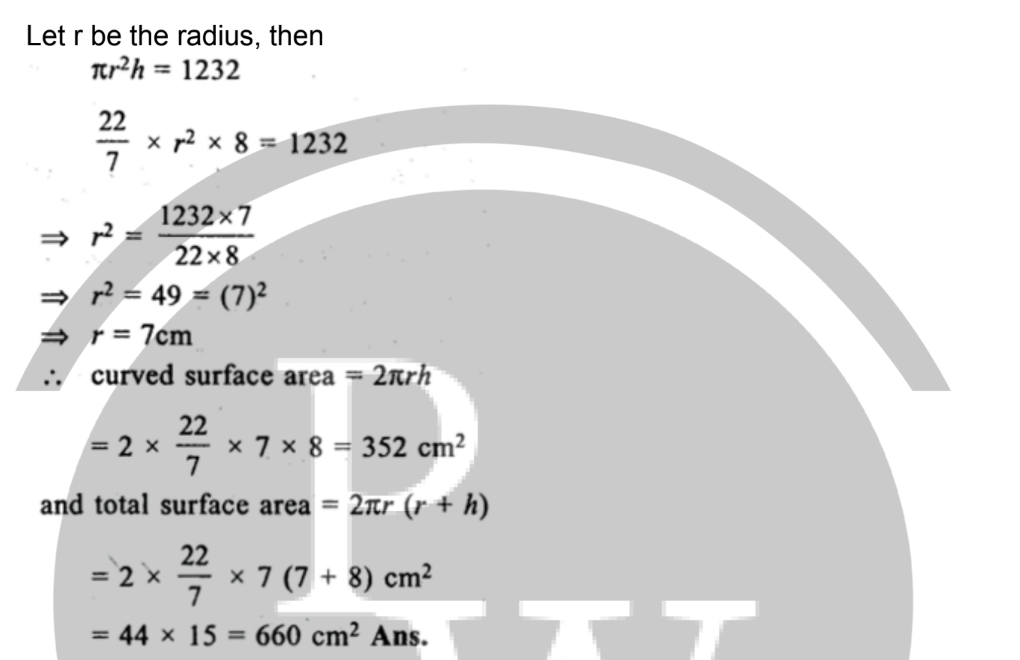
(10) The radius and height of a cylinder area in the ratio 7 : 2. If the volume of the cylinder is 8316 cm 3 , find the total surface of the cylinder.
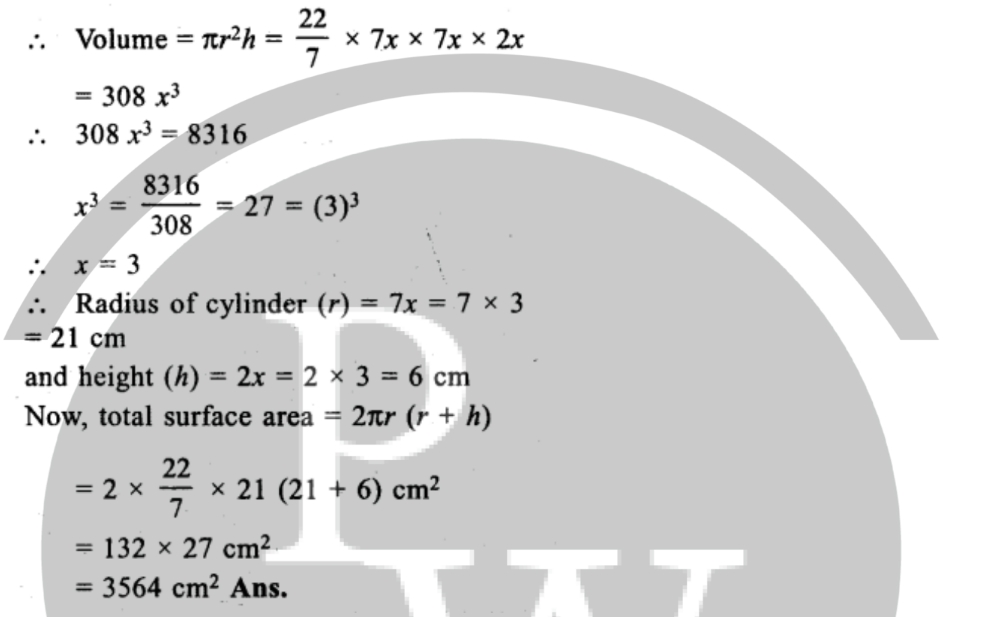
(11) The curved surface area of a cylinder is 4400 cm 2 and the circumference of its base is 110 cm. Find the volume of the cylinder.
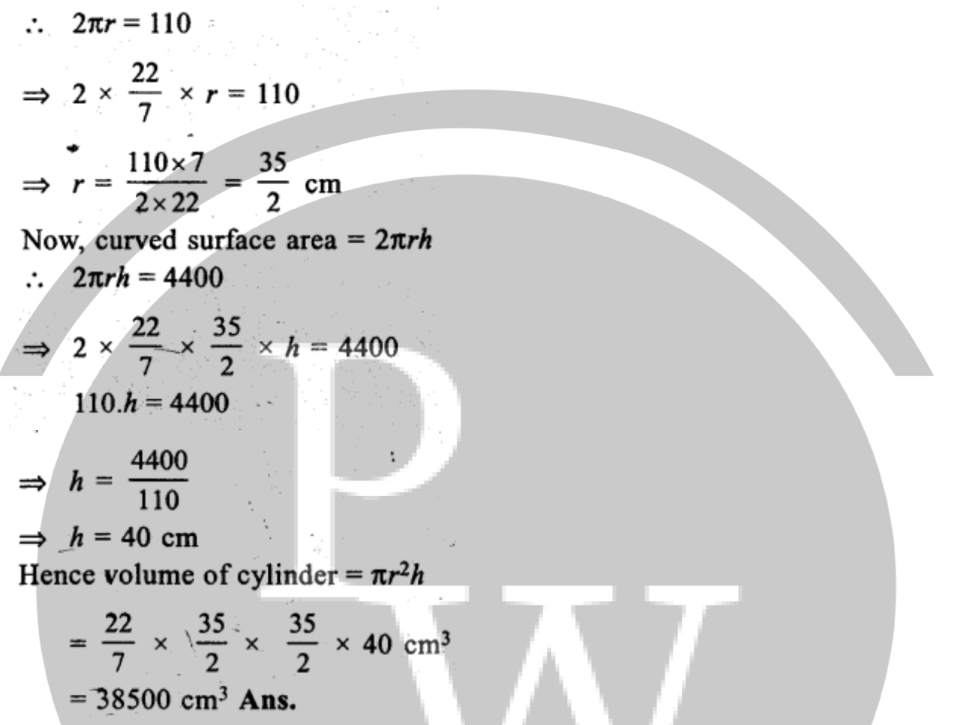
(12) A particular brand of talcum powder is available in two packs, a plastic can with a square base of side 5 cm and of height 14 cm, or one with a circular base of radius 3.5 cm and of height 12 cm. Which of them has greater capacity and by how much?

(13) Find the cost of painting 15 cylinder pillars of a building at Rs 2.50 per square metre if the diameter and height of each pillar are 48 cm and 7 metres respectively.
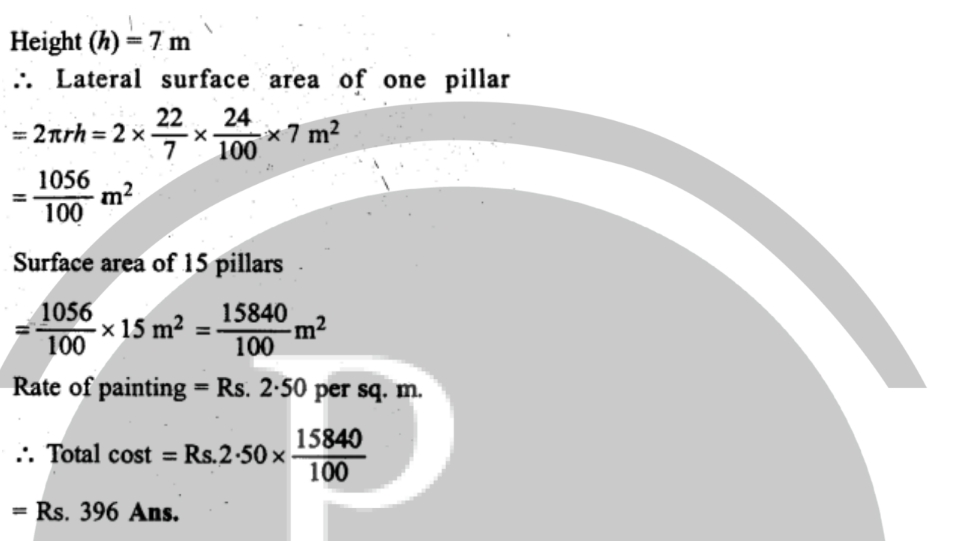
(14) A rectangular vessel 22 cm by 16 cm by 14 cm is full of water. If the total water is poured into an empty cylindrical vessel of radius 8 cm, find the height of water in the cylindrical vessel.
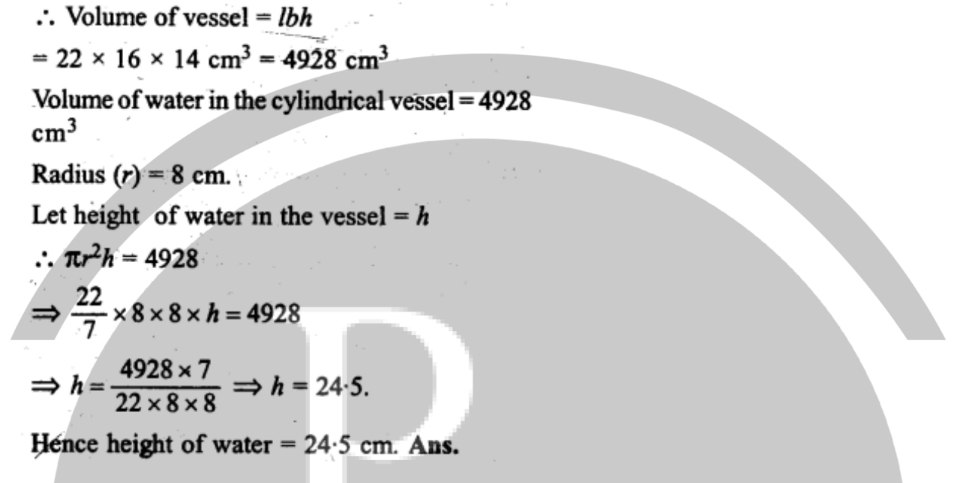
(15) A piece of ductile metal is in the form of a cylinder of a diameter 1 cm and length 11 cm. It is drawn out into a wire of diameter 1 mm. What will be the length of the wire so obtained?
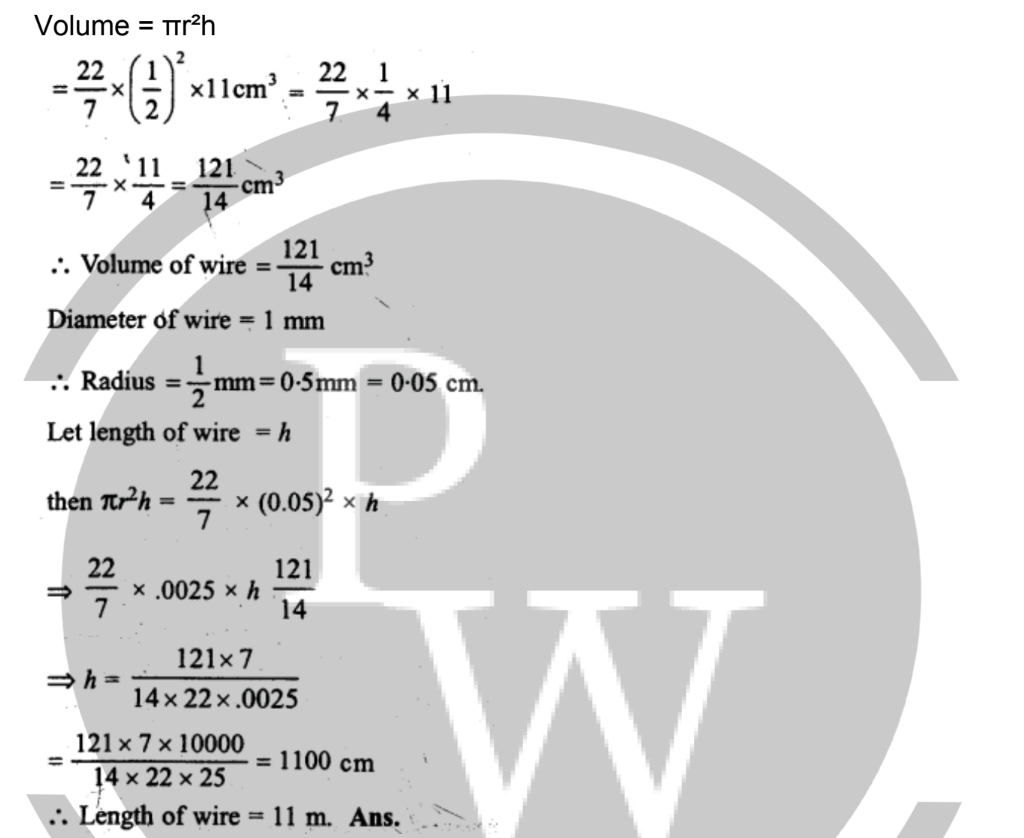
(16) A solid cube of metal each of whose sides measures 2.2 cm is melted to form a cylindrical wire of radius 1mm. Find the length of the wire so obtained.
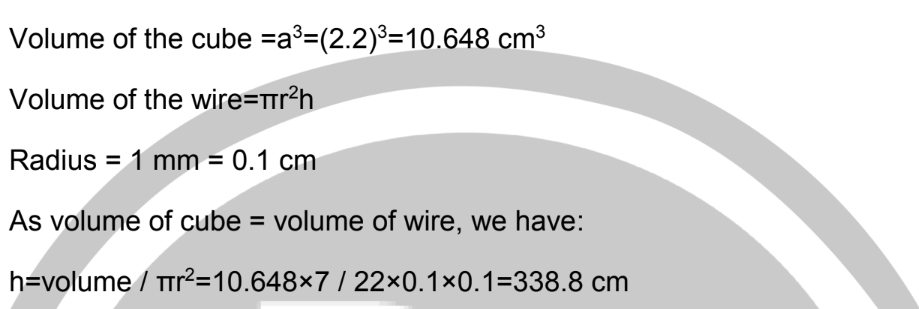
(17) How many cubic metres of earth must be dug out to sink a well which is 20 m deep and has a diameter of 7 metres? If the earth so dug out is spread over a rectangular plot 28 m by 11 m, what is the height of the platform so formed?
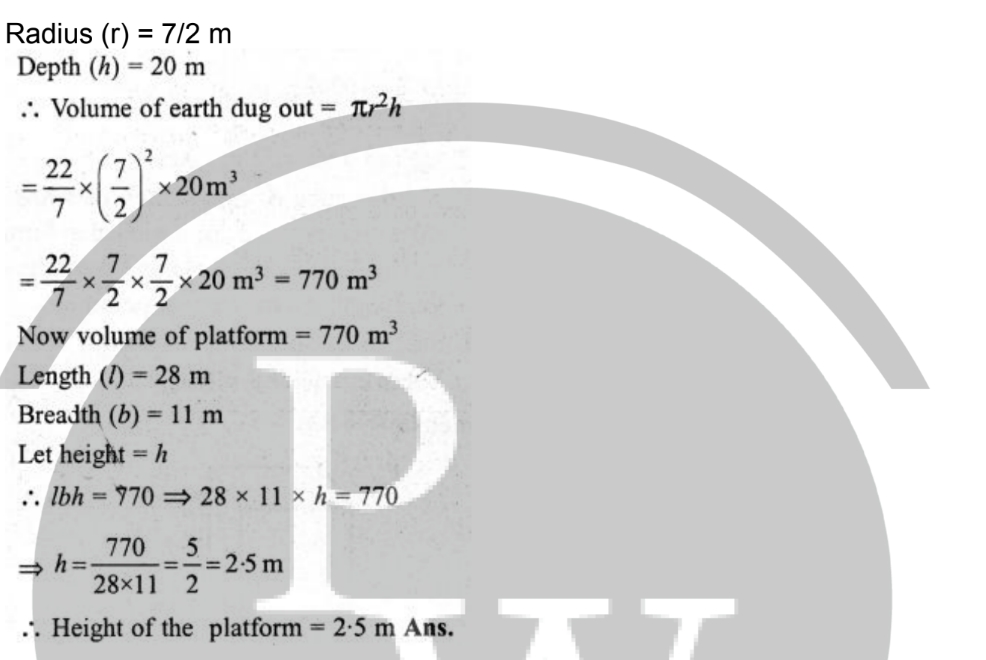
(18) A well of inner diameter 14 m is dug to a depth of 12 m. Earth taken out of it has been evenly spread all around it to a width of 7 m to form an embankment. Find the height of the embankment so formed.
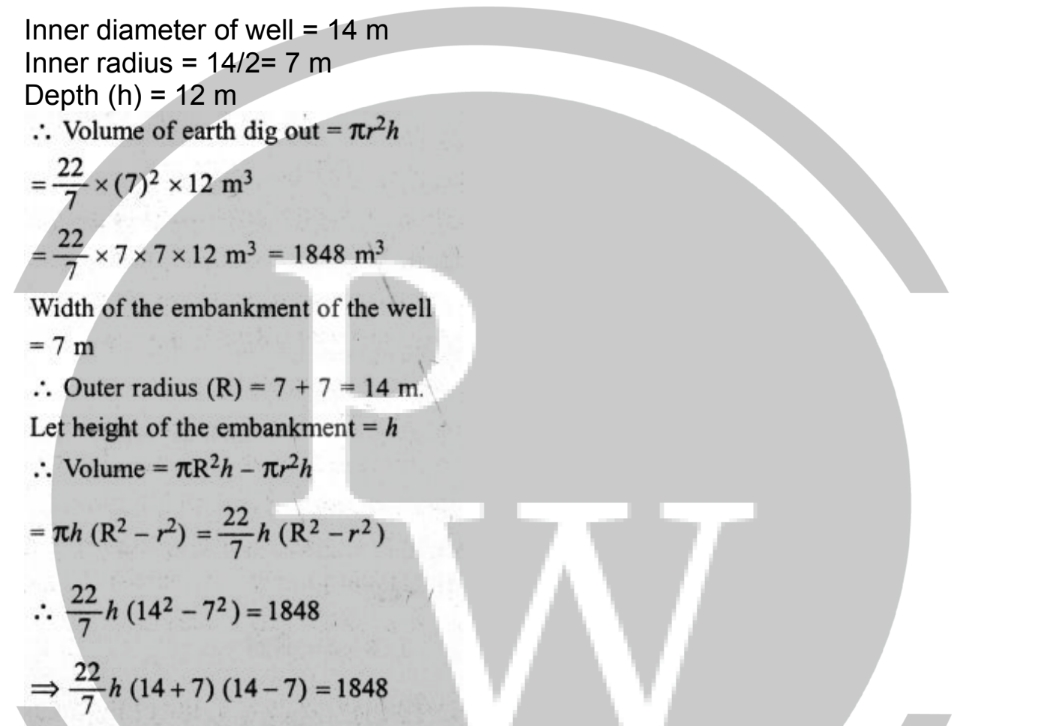

(19) A road roller takes 750 complete revolutions to move once over to level a road. Find the area of the road if the diameter of the road roller is 84 cm and its length is 1 m.
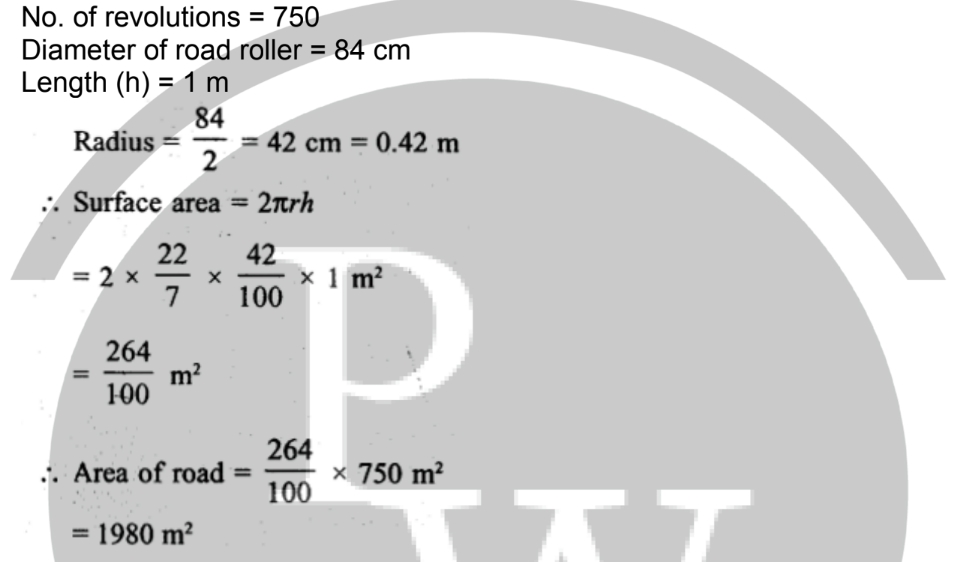
(20) A cylinder is open at both ends and is made of 1.5 cm thick metal. Its external diameter is 12 cm and height is 84 cm. What is the volume of metal used in making the cylinder? Also, find the weight of the cylinder if 1 cm 3 of the metal weighs 7.5 g.
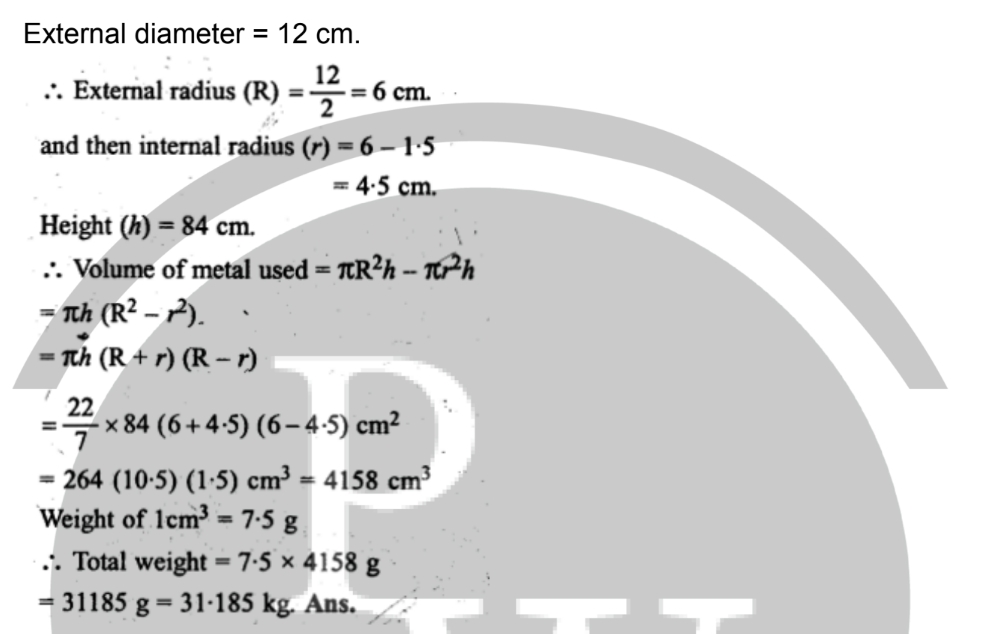
(21) The length of a metallic tube is 1 metre, its thickness is 1 cm and its inner diameter is 12 cm. Find the weight of the tube if the density of the metal is 7.7 grams per cubic centimetre.
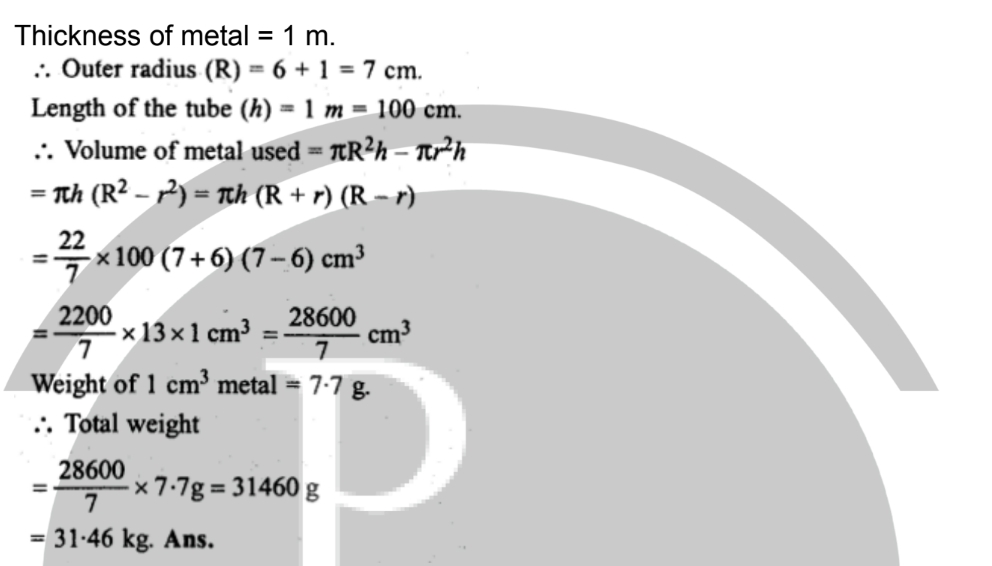
Conceptual Clarity : The solutions provide step-by-step explanations for each problem, helping students understand the underlying concepts of calculating volume and surface area for different solids. This clear approach reinforces their comprehension of three-dimensional geometry.
Practice and Application : By working through diverse problems, students get ample practice in applying geometric formulas to real-world scenarios. This enhances their problem-solving skills and prepares them for more advanced mathematical challenges.
Error Correction : Detailed solutions help students identify and correct mistakes in their calculations. This immediate feedback is crucial for learning and mastering the techniques involved.
Confidence Building : Mastery of exercises boosts students’ confidence in handling similar problems in exams and other assessments, reducing anxiety and improving performance.
Comprehensive Learning : The exercise covers various shapes such as cubes, cuboids, cylinders, cones, and spheres, ensuring a well-rounded understanding of how to handle different geometric forms.
Preparation for Future Topics : Proficiency in these basic concepts lays a strong foundation for more advanced topics in geometry and calculus, which students will encounter in higher classes.
